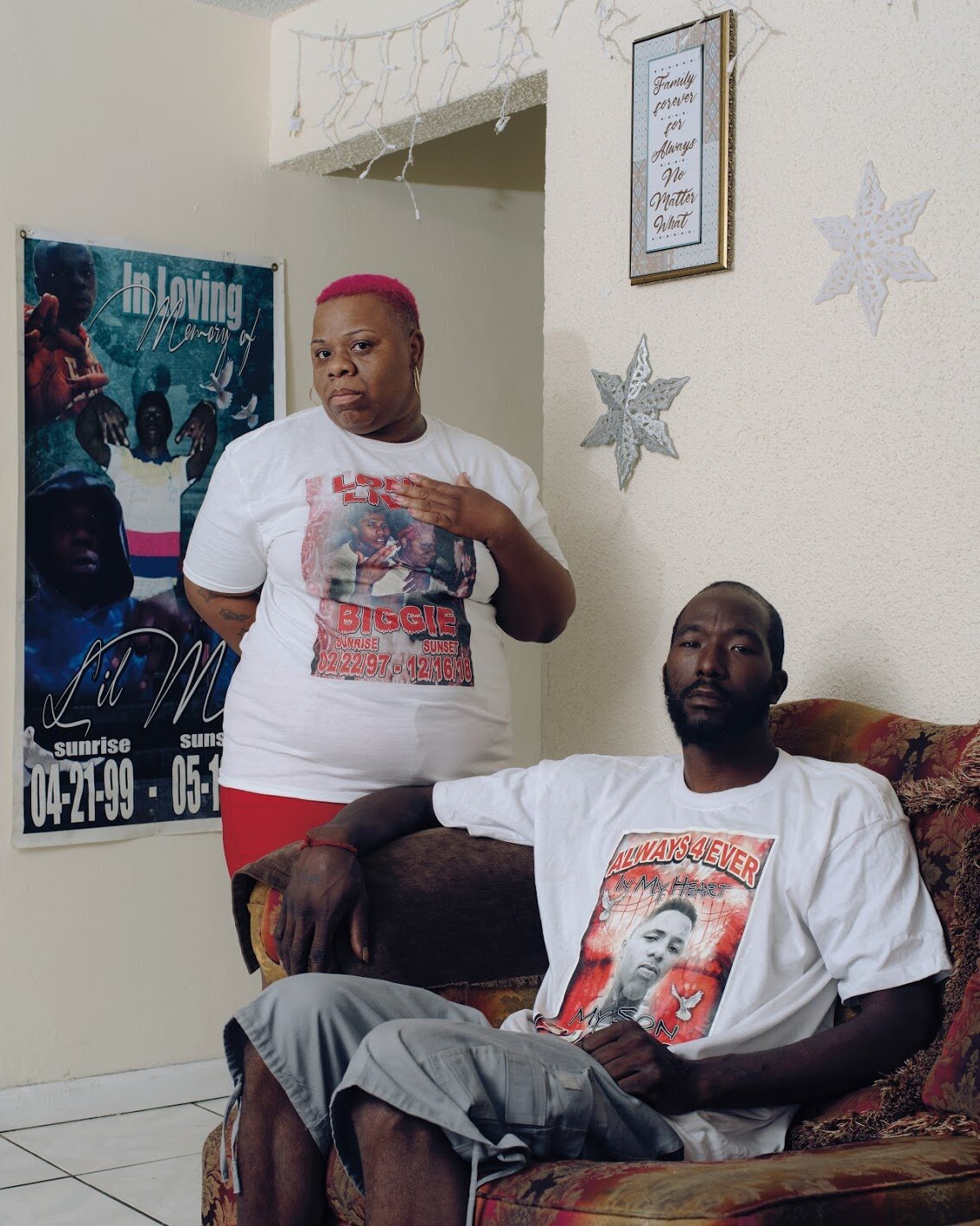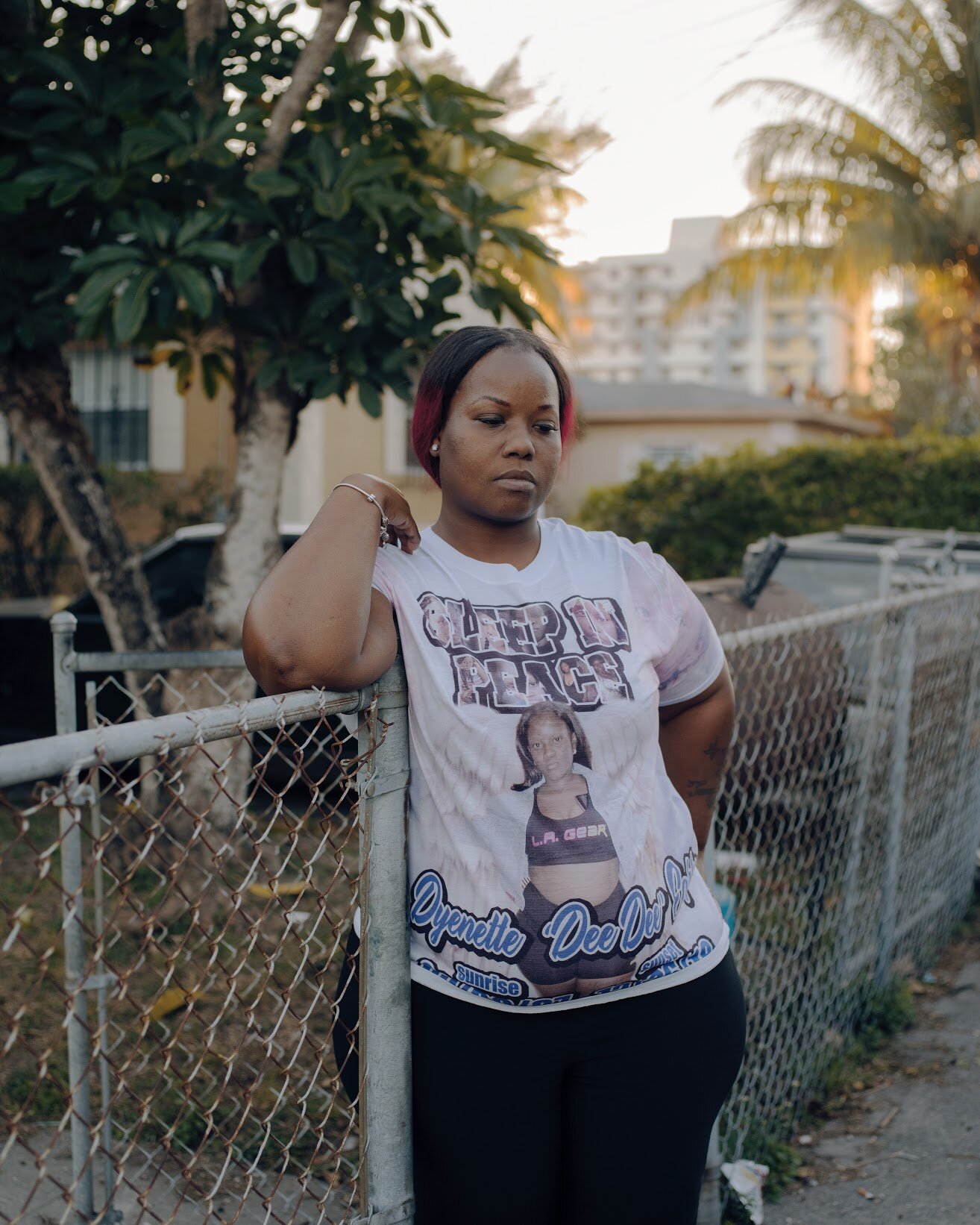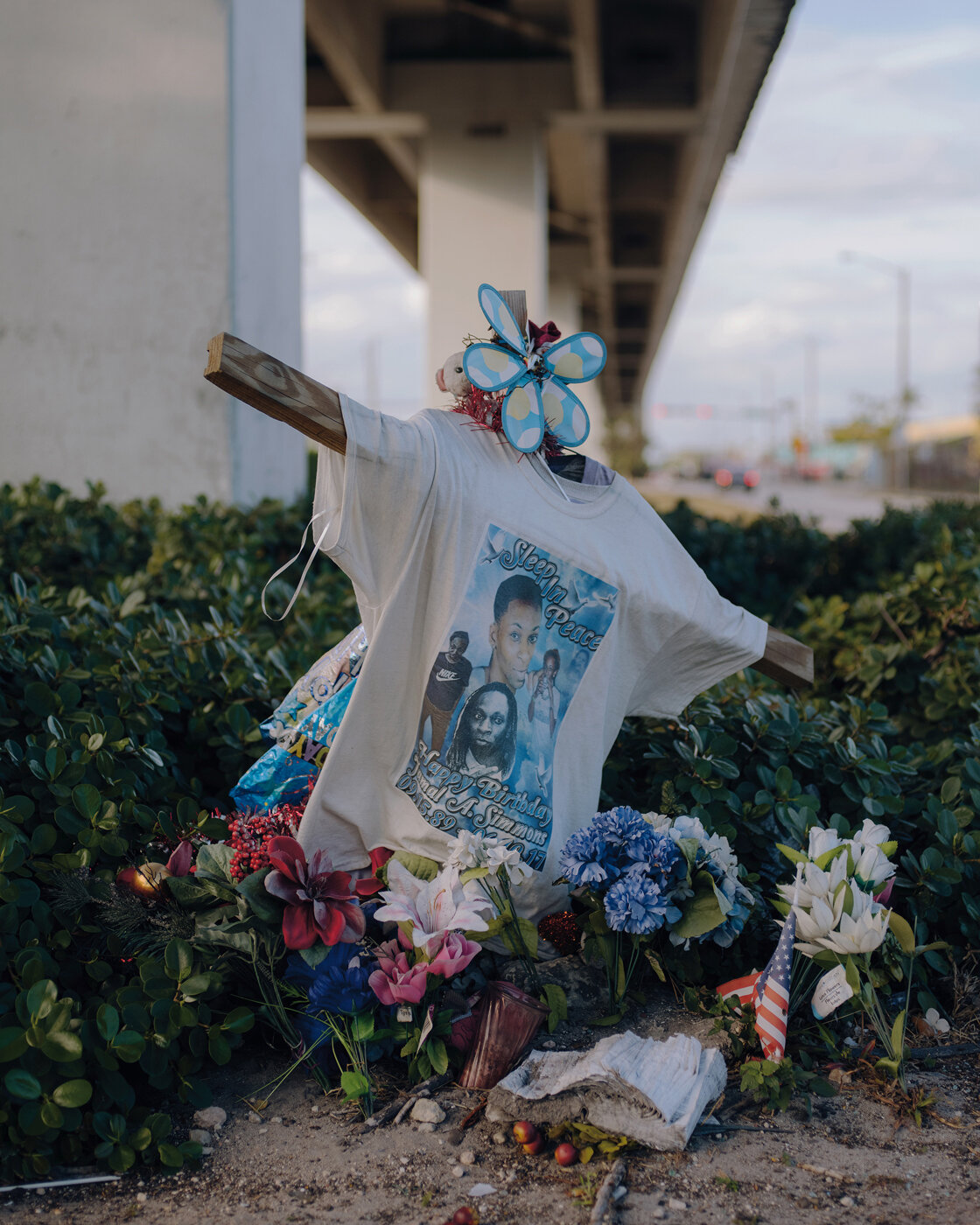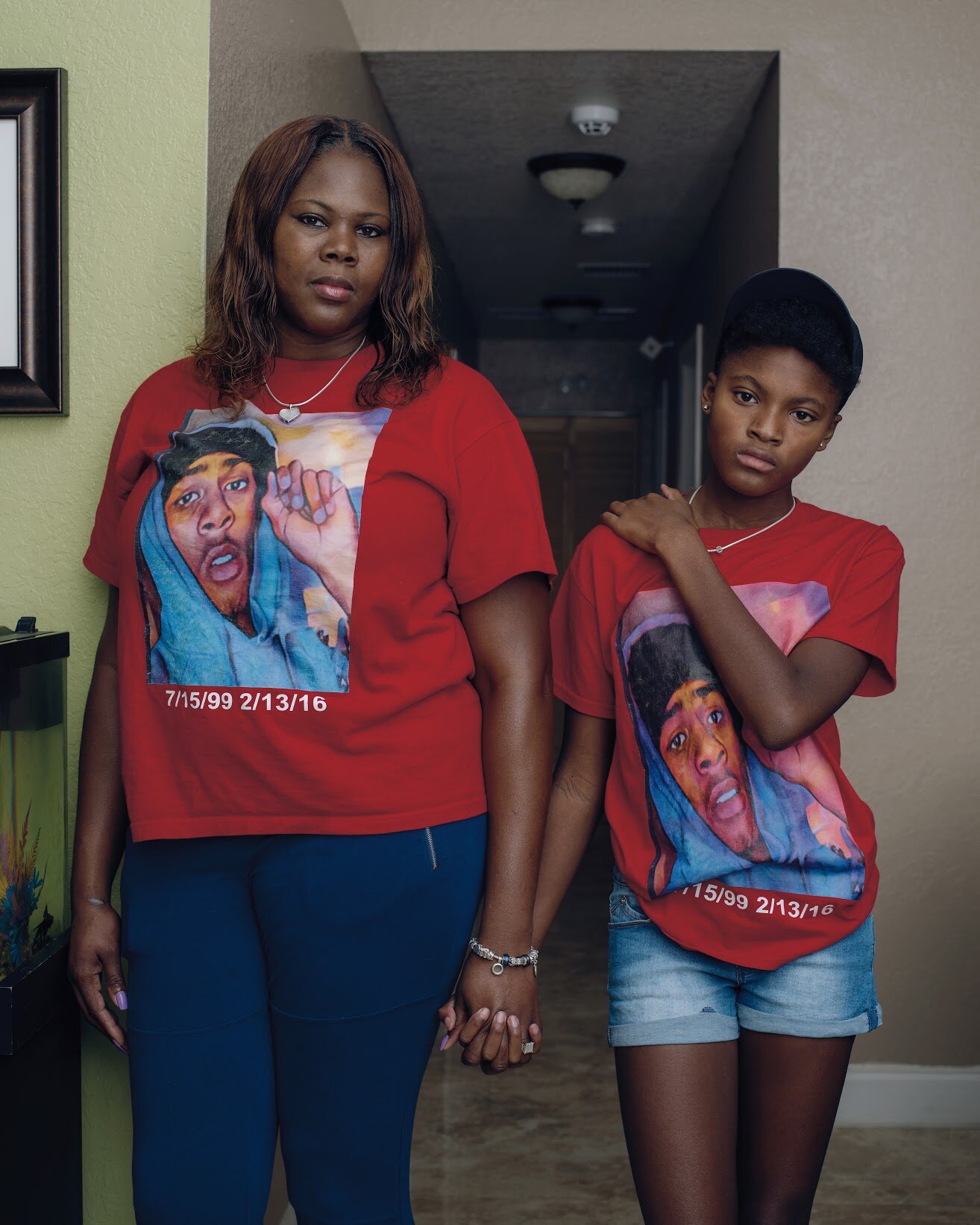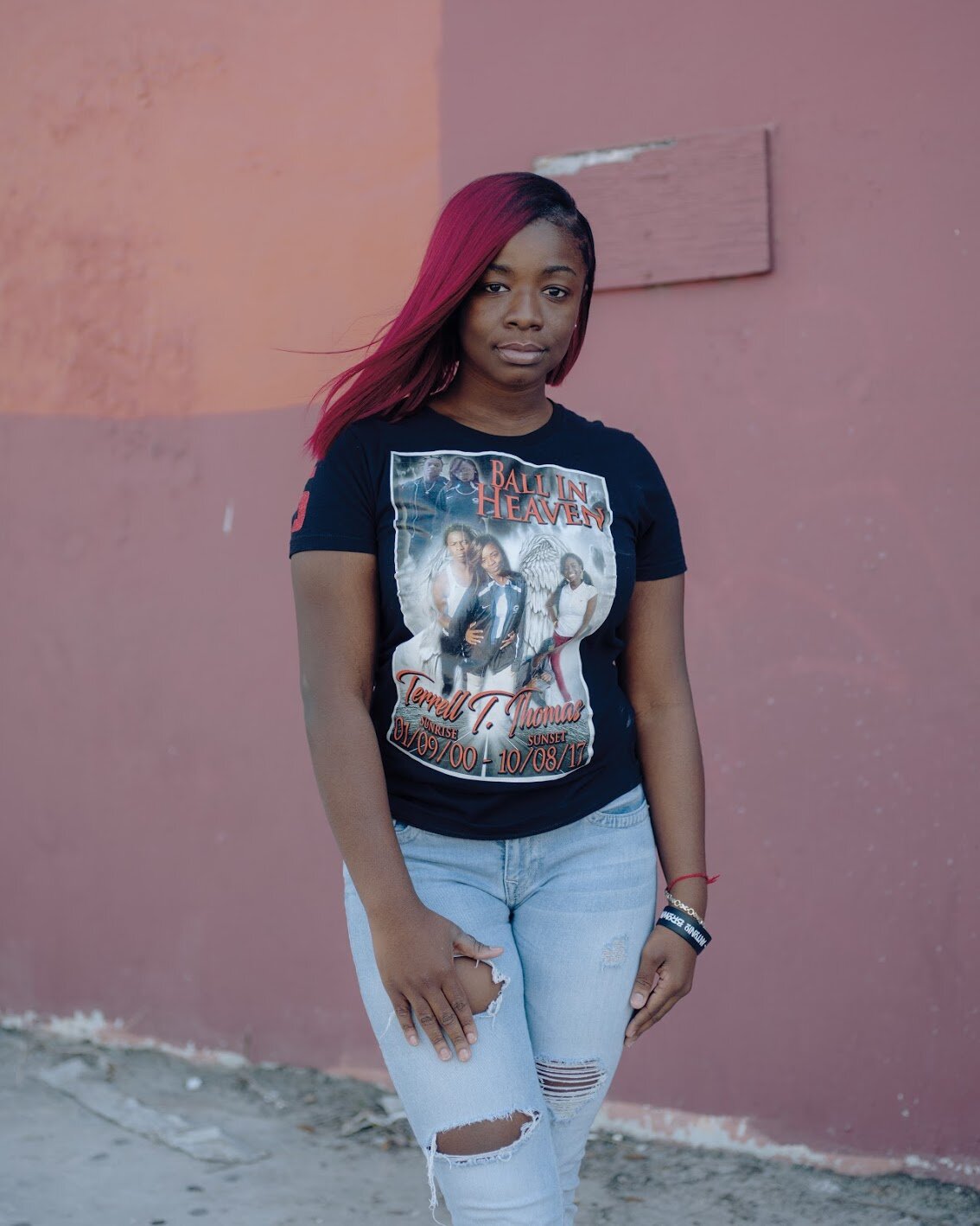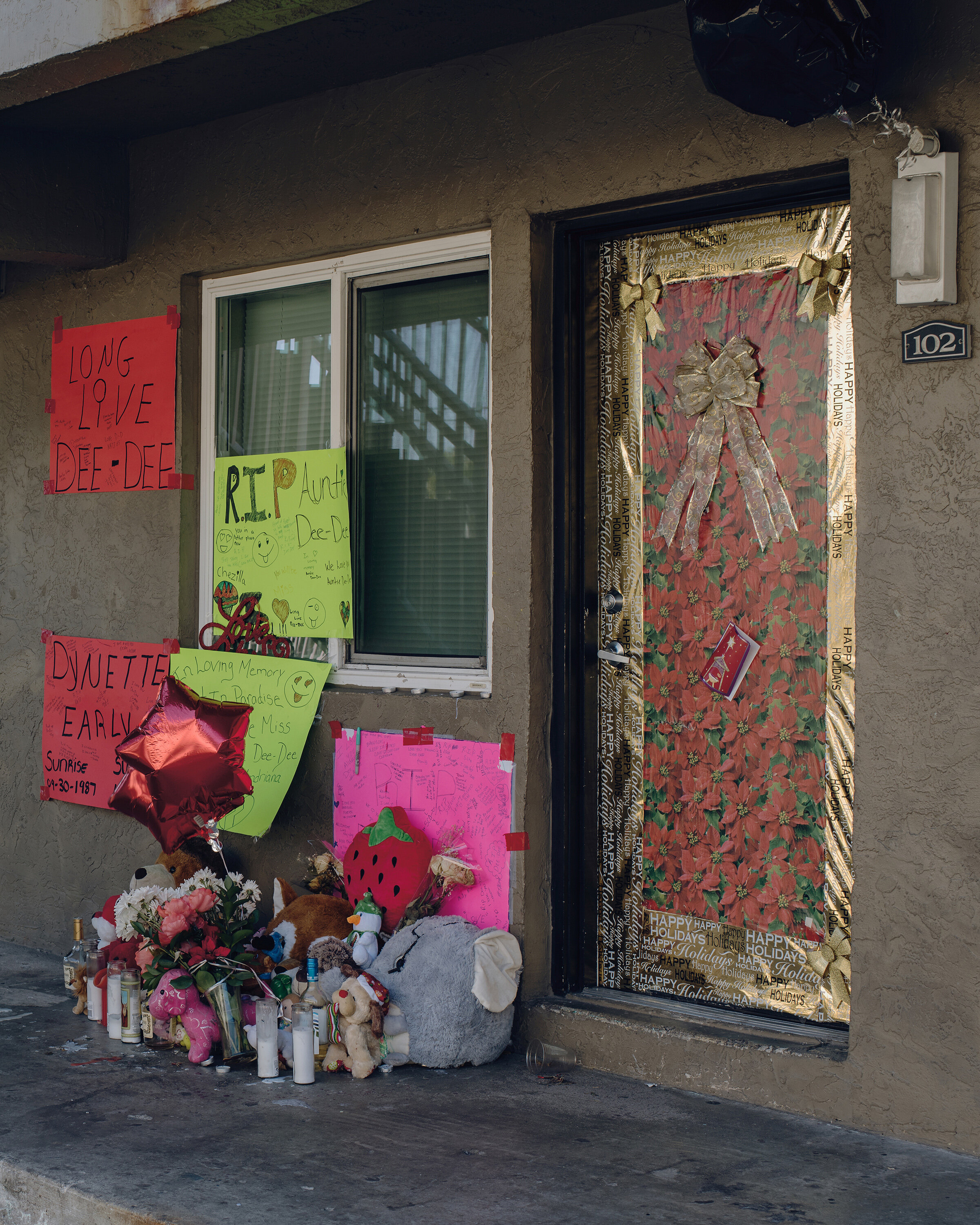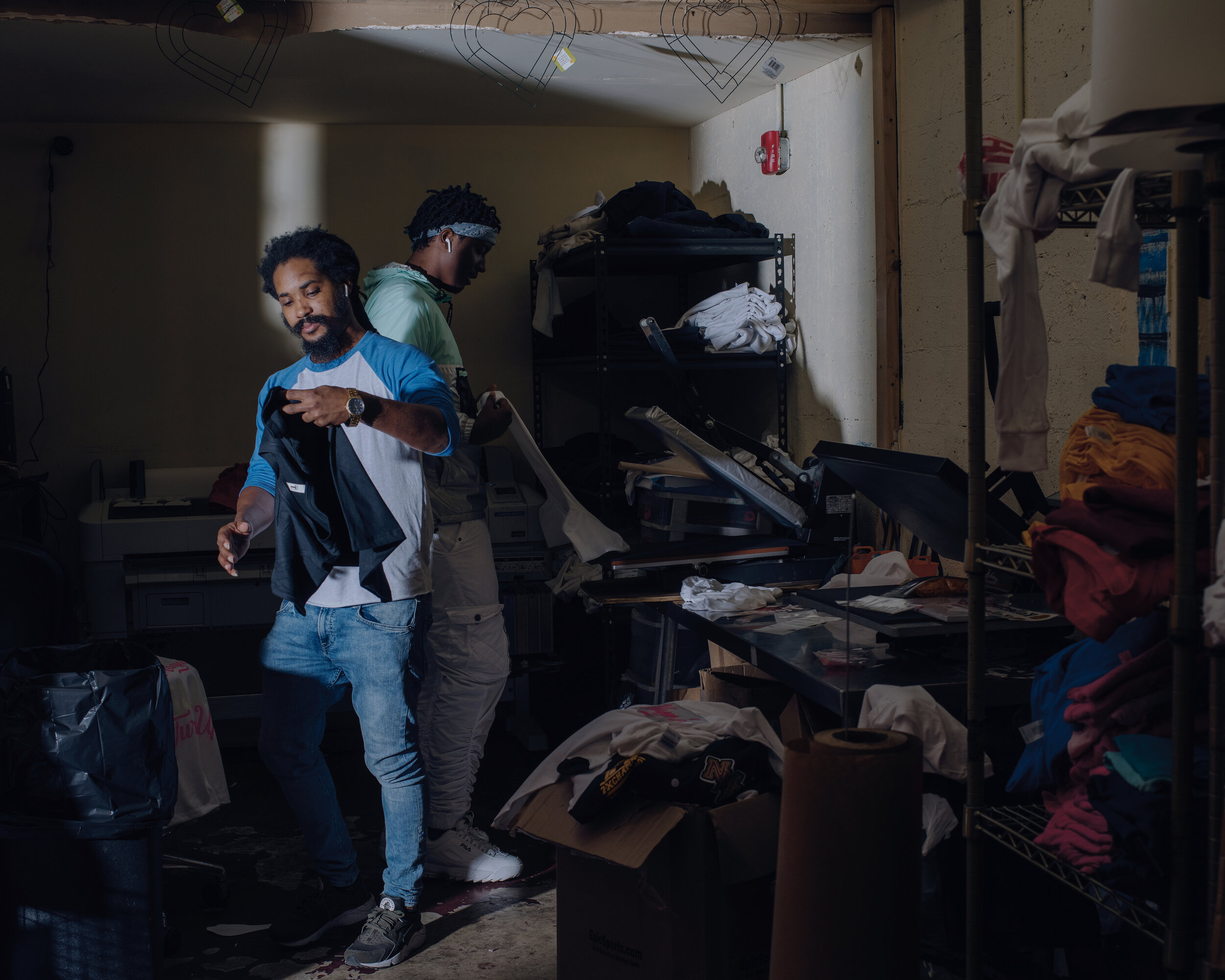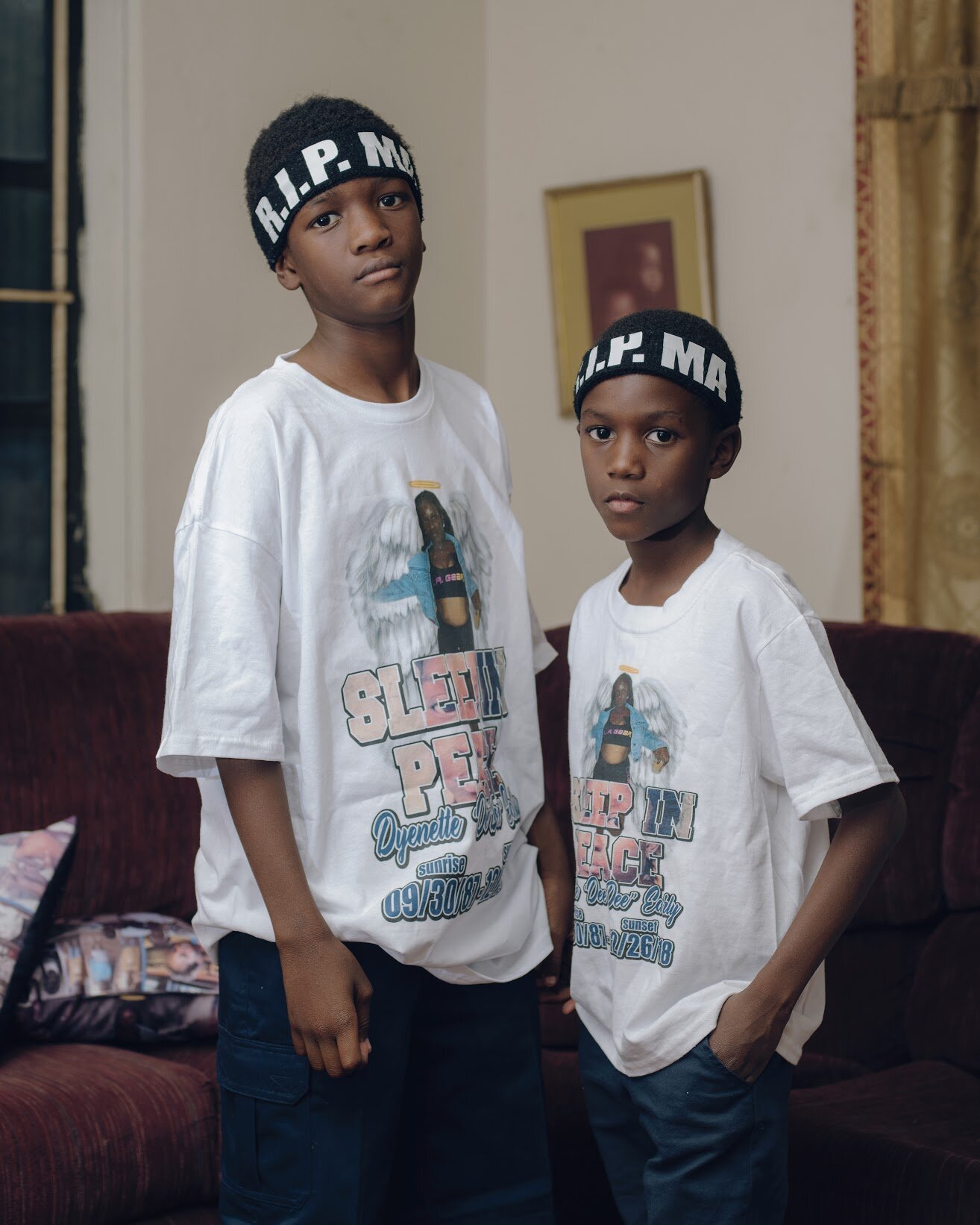Bryan Thomas
“Given the current conversation about the intersection of race and photography, I think it might be a topical time to talk about some of the issues of representation that the work attempts to address.”
First can you elaborate on what you mentioned above, on the issues of representation that the work attempts to address. In terms of your creative process, what question did you engage yourself in when approaching representation? What did you worry you were missing in your attempts and how did you fill those gaps?
For almost their entire existence, photography and journalism have been the domain of bourgeois, white men such as myself. As a result, our written and visual history of the world has been predominately told through that point-of-view; often with harmful results. Hopefully, if you live in 2020 and you care about photography or journalism (or, in my case, both), it’s your responsibility to ask why you tell the stories that you do and how you tell them; examining, along the way, how your own ignorance and bias might not only harm those that you are photographing but, more broadly, misinform the public through the replication of harmful stereotypes. Because I’m an independent photographer—who is often responsible for creating, pitching, and executing my own stories when not on-assignment for a publication—I have a lot of freedom in coming up with what projects I want to pursue. And, because I want to create work that is based in contemporary social issues, I typically begin my creative process by examining an issue being contemporaneously covered (i.e. climate change, gun control, etc.) and asking what I can contribute that 1) examines the issue in a way that I feel is being underreported and 2) photograph it in a way that challenges audiences to reexamine and/or reorient how they view those same issues. In regard to this work, I spent years leading up to the pictures that I made in Miami, thinking about the police-involved murder of Eric Garner, the ubiquity of “Rest in Peace” shirts at his funeral, our country’s ongoing epidemic of mass shootings, and why our media covers both tragedies in such asymmetric ways. I researched the history of “Rest in Peace” shirts and interviewed gun control experts and community activists in the neighborhoods where these shirts were popular. Two years after Eric Garner's funeral—and before making a single picture—I traveled to Platinum Graphics in New Orleans to speak with owners Bryan and Trenice McMillian. The McMillian's welcomed me into their shop, educated me on the history of the "Rest in Peace" shirt tradition in their hometown, and introduced me to New Orleans and the customers they serve. They also told me that, in the time that they had been in business, they had put former customers on shirts as well as family members. Later that year, I visited Aaron “Black Picasso” Ray in Wilmington, DE and spoke to him about his airbrushed “Rest in Peace” shirts and how he, through his art, hoped to heal the families of those who’d died at the hands of guns held by civilians and police officers alike. As I continued researching, I began to better understand the topic, but I also recognized that I could never understand it as fully as someone who had lived it. For more than two years, I put the project on hold as I thought about the implications of a white man telling a story about gun violence that affected predominately Black communities; communities that have often been misrepresented or entirely ignored. I researched. I thought. I spoke to friends. I thought some more. I spoke to academics. I considered if I could tell this story and, if I even should, how I would do so.
I worried that, even with all the information in the world, this story had the potential to only reinforce harmful stereotypes about gun violence in Black neighborhoods if it didn’t have the right photographic approach. Aware that the statistics of Black-on-Black crime are often used as a racist straw man argument that victims of these crimes are somehow less deserving of sympathy, and ultimately, justice, I wanted to make sure that my story didn’t, however unintentionally, contribute to that same narrative. Just this very morning—after violent weekends in New York and Chicago—Nikole Hannah Jones had to combat such racist arguments, “It is unconscionable that any leader—especially a Black one—would blame Black communities for a criminal element that is taking our loved one’s, as if we condone it, as if asking police not to kill us justifies civilians doing so.” By narrowly focusing on the shirts—which I had come to believe were a community’s way of publicly reclaiming the memory of lost loved ones either misrepresented and/or forgotten by the media—I hoped that I could mitigate some of the gaps in my own lived experience. And, because I knew that a photographer from the community I was covering would be more adept at telling a nuanced story, over a longer period of time, about the contributing factors to this gun violence—such as redlining, poor policing, low trust in law enforcement—I focused on portraiture, which has the capability to be more collaborative, instead of taking a more documentary approach. To what degree I was successful isn’t really for me to decide. I hope that, through research, sensitivity, and skill, I’ve done justice to those who participated in making this work; but I also recognize that, regardless of my intentions, this work could have the blindspots that I hoped to avoid.
When was the first time you saw a Rest in Peace memorial shirt, can you share where you were and how the T-shirts being worn contrasted to the environment you may have been in?
In 2014, I was hired to photograph the funeral of Eric Garner, murdered by New York City Police Department officer, Daniel Pantaleo, when Pantaleo—suspecting that Garner was illegally selling cigarettes—placed Garner in an illegal chockhold. While attending Garner's funeral for The New York Times a week after his death, I noticed family and friends wearing shirts, emblazoned with "Rest in Peace” in bold red letters, bearing Garner's likeness. The image of Garner, smiling broadly while wearing a tuxedo, was a far cry from the images that had dominated the news in the preceding week: a graphic video of his death and the haunting words "I can't breathe”—a soon-to-be rallying cry—repeated 11 times while laying face down with a police officer on his back. In light of this discrepancy, I began to think about the way in which we mourn; in particular, amid the rising attention given to mass shootings in the United States, I began to think about grief, personal memorials, and the recognition of Black life and death in the United States. How do communities that suffer disproportionally from gun violence mourn tragic events that have become altogether routine whilst also protesting the inequities that led to such deaths? After this assignment, I began researching these issues, traveling around the country to speak to those who owned shops that sold these shirts, and trying to formulate how you could tell a visual story about gun violence in Black communities without resorting to the tropes that had lead to the necessity of these shirts in the first place. When I had the opportunity to travel to Miami for topic.com to continue this work, I had the opportunity to document the "Rest in Peace" shirt trend in a community that—while only an hour from Parkland—faces daily gun violence without the same public attention. A community and a lack of attention that Emma Gonzalez described in a tweet as thus: “Those who face gun violence on a level that we have only just glimpsed from our gated communities have never had their voices heard…the way that we have in these few weeks.”
Take us inside the graphic shops in which these shirts are made, how did you arrive there? What did the owners share with you about the routine of these shirts being made? How did visiting these shops lead to photographing individuals who have had to have Rest In Peace shirts made?
Over the years, I’ve been to several shops but, like I said above, I really don’t think I had the base of knowledge and the correct approach to do this story correctly—in my estimation—until I was in Miami. In Miami, I spent all of my time at Lavish Printing, the shop owned by Geofrey Robinson and Leon Cobbs. Robinson and Cobbs are both former employees at Studio X, one of Miami’s most well-known locations to buy “Rest in Peace” shirts. Lavish Printing is run out of a booth at Village Flea Market, amongst several other graphics companies, jewelry stores, and tattoo shops. When topic.com called to see if I wanted to do this story in Miami, I was familiar with the area—I grew up in Tampa—and I began making calls to see what shops were there. I ended up speaking with the former owner of Studio X and he recommended that I get in touch with Leon and Geofrey. I spoke with Leon, explained what I was doing, and he was very receptive to the project. In my experience, these shops were often as much community centers—and one of the first places that those in mourning came—as much as they are places of business. And those, like Leon and Geofrey, who ran these stores are as much grief counselors as business owners. Therefore, I wanted to center the story at the store and branch out to the individuals that they serve. Leon connected me with families that they had made shirts for including a relative of Geofrey’s. I’d spend most of the day at the shop, with trips to photograph current and former customers when they were available. The shop was moments of levity—with lots of friends just hanging out, listening to music, and playing video games—interrupted by extreme sadness; especially later in the week as more orders came in for the weekend’s funerals. Miami might be a big city, but it didn’t feel that way when everyone making orders had some connection to Leon, Geofrey, or another employee. Years before, Bryan and Trenice McMillian of Platinum Graphics in New Orleans, had told me how they’d made shirts for people that they eventually put on shirts. Seeing how everyone in the shop had been personally effected by gun violence reinforced that a sad reality described years before had changed very little.
Can you describe the Sunrise / Sunset shirt, how are they designed to be a symbol against looking away? What message do they spread that mainstream media does not?
Every t-shirt is different and, often, individualized for the customer and their lost family/friend, so it’s hard to describe them generally. Most feature photos of the deceased, often with the date of birth and the date of death, and sometimes with phrases such as “Sunrise” and “Sunset” next to both. Most importantly though, they are made by and for the family and friends of the deceased and, as such, are the truest representation of those that were lost. While working on this story for topic.com, the writer Adam Weinstein described a headline depicting the death of La’Nard Wilcher (whose mother and sister we photographed) as having “a tabloid’s grime facelessness” and for most of the victims of gun violence that we reported on that was a saddening reality. Brothers, sisters, daughters, and sons were reduced to a late-night news chyron or several sentences buried in the Miami Herald. On a personal level, these shirts are an opportunity for the family members of those lost to tell a fuller story of who their loved ones had been. On a societal level, they are public displays of private grief that confront those not aware of or accustomed to such violence; seen daily, for years to come, as a protest against the inequities that lead to the death of a loved one.
Can you share what it was like to visit each home, how did you collaborate with each person In Sunrise Sunset? Can you elaborate on why it was important to document all ages and relations?
Each home, like each person, is a different experience and I try to treat it as such. The essence, I think, of any collaboration is the capacity to listen. Usually I’ve explained who I am and what I’m doing before I met someone in person, but I often go over that again when I’ve arrived, so that everyone understands where I’m coming from and what I’m trying to do. From there, I try to listen—literally and photographically—and take my cues from the people I’m photographing. I don’t tend to give a lot of direction initially. When I make portraits, I want people to settle in to what feels most authentic for themselves and, together, we kind of stumble into something that feels right. Hopefully, in the end, it’s an image that represents both sides of that relationship. As for why it was important to document all ages and relations? Quite simply, gun violence affects all ages and relations, so I wanted my images to do the same.
I want to revisit what you mentioned above regarding a photographers approach: “It’s your responsibility to ask why you tell the stories that you do and how you tell them; examining, along the way, how your own ignorance and bias might not only harm those that you are photographing but, more broadly, misinform the public through the replication of harmful stereotypes.” Could you elaborate on this and what advice would you give to photographers approaching these and other social issues in their own work?
I think that, sometimes, photographers can be a little cavalier with the impact that their images have. While I hesitate to discourage any photographer from “indulging their curiosity,” I think that photographers also need to have an understanding of the medium’s history, the power dynamics inherent in the act of picture making, and a respect for those they photograph that takes into account that history and dynamic. While the intentions of photographers engaging with social issues might be well-meaning, without an understanding of the medium and its history, they might unintentionally be replicating and reinforcing harmful stereotypes. I can’t comment on whether I’ve done enough of the work to avoid doing that myself—that’s for viewers to decide—but I think that it’s an important part of our practice to engage with these ideas. In much the same way that I’m an advocate for coming up with an artist’s statement before making a body of work (edited and amended, of course, as projects take shape), I really appreciate an attempt to be as intentional about image-making as possible; that shouldn’t stop and start with merely the genesis of an idea or the technical production of an image, but also its place in the history of photography.
To keep up to date on Bryan’s latest work follow along here:

